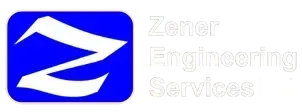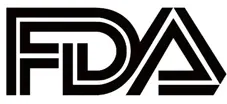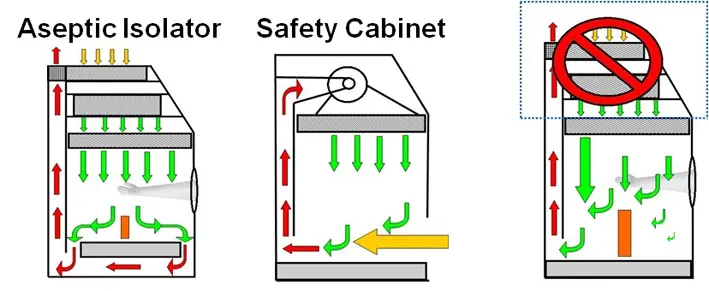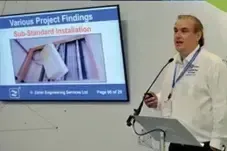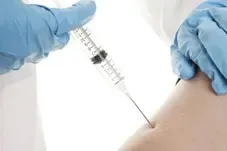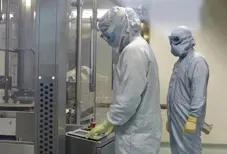Life Science Case Studies
Zener Engineering Services Ltd
Life Science Case Studies
Zener Engineering Services Ltd
Life Science Case Studies
Zener Engineering Services Ltd
Validation Services | Project Management | GAMP 5 ® | Data Integrity
ZES Case Studies From Various Projects
Zener Engineering Services Ltd (ZES) have worked with many clients. Some Life Science Case Studies and success stories are highlighted below. You may download the GxP Case Study Brochure from ZES for more details:
ZES Case Studies From Various Projects
Zener Engineering Services Ltd (ZES)
have worked with many clients.
Some Life Science Case Studies
and success stories are highlighted below.
You may download the GxP Case Study Brochure from ZES for more details:
ZES Case Studies From Various Projects
Zener Engineering Services Ltd (ZES) have worked with many clients. Some Life Science Case Studies and success stories are highlighted below. You may download the GxP Case Study Brochure from ZES for more details:
Bespoke GxP Training Promotional Video
GxP Cloud Validation
'My Budget, My Project - You Went To QA'
- Project Manager with No GxP experience - working for a Blue Chip Pharmaceutical company.
Does a GxP Cloud System need an approved URS before UAT commences?
When ZES recently won a GxP Cloud Validation contract, they made it clear to the Client (a mid-sized pharmaceutical company) during the very stringent selection process that ZES were not a company for approving documentation which was deemed 'half baked' or not to the required standard based on risk. This is due to the potential risk to the Patient and the potential reputational damage to ZES. In this case ZES were contractually obliged to provide the best industry practice with regards to Computer System Validation (CSV) for Phase Two of a GxP Cloud Validation Project, and this was clearly stated in the contract.
Upon commencing the validation, the ZES Validation Consultants were then surprised to find that User Acceptance Testing (UAT) had been "completed" (to a poor standard), even though neither a URS nor a Validation Plan had been approved and both documents were actually only in a very initial draft version. Also the UAT had been recorded on uncontrolled spreadsheets, with empty cells.
Upon a review of the Phase One paperwork, which had been signed off by a representative of the Quality department, the paperwork was generally of the same poor standard. As Phase Two of the project was building on Phase One, ZES had a number of significant concerns including the insecure transfer of Patient Data.
Upon review of the Statement of Works for Phase Two, the chosen Software Supplier only had one deliverable, which was to provide project updates on a weekly basis. There was no mention of delivery of a GxP compliant system.
The ZES Consultants tried their very best to educate, train and mentor the Client’s Project Manager and other personnel, but to no avail.
Therefore, a number of fundamental quality issues were constructively highlighted to the Client's Quality Director. These included but were not limited to:
- Documentation to a poor standard (missing information, missing signatures, not approved etc)
- Site Leadership Team being misled by the Client's Project Manager
- "Documents quoted as 80% complete" when in fact they were actually in a very poor initial draft
- "UAT complete" when in fact the test records were of a very poor standard, with No approved URS or VP in-place
- Uncontrolled and incomplete spreadsheets used to record UAT results. (empty cells, not password protected, no formal signatures or version control, etc)
- Supplier's Statement of Works made no mention of any aspect of GxP or the required standards for software
- Building on Phase One, when Phase One was of a poor standard and had not been completed to the industry best practice standard and fully signed off
- Engaging a Suppler with no pharmaceutical software experience
- Inappropriate use of live Patient Data
- Patient Data transfer without a Risk Assessment or Backup Plan
- No evidence that the software was built by the Supplier to a GxP standard, eg no evidence of testing or defect management
- System classed as a simple database by the Client, yet the System provided functionality for Users, ie decided who was correctly trained, scheduled appointments, sent referrals, provided chat rooms, provided limited patient interaction, had GDPR implications and provided functionality to change clinical interventions
What action do you think the Quality Director took after the meeting?
The Quality Director promptly served ZES with notice.
In a final meeting, the Clients Project Manager said "My Budget, My Project - You Went To QA."
What message did the Clients Quality Director actually send to the rest of the Client's team?
ZES pride themselves on their professionalism and integrity and will always look for Clients with the same mindset. The reputation of ZES is paramount and, once it is lost, it is hard to regain.
ZES provide CSV expertise for all GxP computer systems.
Contact ZES for a Helping Hand with GxP Training.
GxP Cloud Validation
'My Budget, My Project - You Went To QA'
- Project Manager with No GxP experience - working for a Blue Chip Pharmaceutical company.
Does a GxP Cloud System need an approved URS before UAT commences?
When ZES recently won a GxP Cloud Validation contract, they made it clear to the Client (a mid-sized pharmaceutical company) during the very stringent selection process that ZES were not a company for approving documentation which was deemed 'half baked' or not to the required standard based on risk. This is due to the potential risk to the Patient and the potential reputational damage to ZES. In this case ZES were contractually obliged to provide the best industry practice with regards to Computer System Validation (CSV) for Phase Two of a GxP Cloud Validation Project, and this was clearly stated in the contract.
Upon commencing the validation, the ZES Validation Consultants were then surprised to find that User Acceptance Testing (UAT) had been "completed" (to a poor standard), even though neither a URS nor a Validation Plan had been approved and both documents were actually only in a very initial draft version. Also the UAT had been recorded on uncontrolled spreadsheets, with empty cells.
Upon a review of the Phase One paperwork, which had been signed off by a representative of the Quality department, the paperwork was generally of the same poor standard. As Phase Two of the project was building on Phase One, ZES had a number of significant concerns including the insecure transfer of Patient Data.
Upon review of the Statement of Works for Phase Two, the chosen Software Supplier only had one deliverable, which was to provide project updates on a weekly basis. There was no mention of delivery of a GxP compliant system.
The ZES Consultants tried their very best to educate, train and mentor the Client’s Project Manager and other personnel, but to no avail.
Therefore, a number of fundamental quality issues were constructively highlighted to the Client's Quality Director. These included but were not limited to:
- Documentation to a poor standard (missing information, missing signatures, not approved etc)
- Site Leadership Team being misled by the Client's Project Manager
- "Documents quoted as 80% complete" when in fact they were actually in a very poor initial draft
- "UAT complete" when in fact the test records were of a very poor standard, with No approved URS or VP in-place.
- Uncontrolled and incomplete spreadsheets used to record UAT results (empty cells, not password protected, no formal signatures or version control, etc)
- Supplier's Statement of Works made no mention of any aspect of GxP or the required standards for software
- Building on Phase One, when Phase One was of a poor standard and had not been completed to the industry best practice standard and fully signed off.
- Engaging a Suppler with no pharmaceutical software experience
- Inappropriate use of live Patient Data
- Patient Data transfer without a Risk Assessment or Backup Plan
- No evidence that the software was built by the Supplier to a GxP standard, eg no evidence of testing or defect management
- System classed as a simple database by the Client, yet the System provided functionality for Users, ie decided who was correctly trained, scheduled appointments, sent referrals, provided chat rooms, provided limited patient interaction, had GDPR implications and provided functionality to change clinical interventions
What action do you think the Quality Director took after the meeting?
The Quality Director promptly served ZES with notice.
In a final meeting, the Clients Project Manager said "My Budget, My Project - You Went To QA."
What message did the Clients Quality Director actually send to the rest of the Client's team?
ZES pride themselves on their professionalism and integrity and will always look for Clients with the same mindset. The reputation of ZES is paramount and, once it is lost, it is hard to regain.
ZES provide CSV expertise for all GxP computer systems.
Contact ZES for a Helping Hand with GxP Training.
GxP Cloud Validation
'My Budget, My Project - You Went To QA'
- Project Manager with No GxP experience - working for a Blue Chip Pharmaceutical company.
Does a GxP Cloud System need an approved URS before UAT commences?
When ZES recently won a GxP Cloud Validation contract, they made it clear to the Client (a mid-sized pharmaceutical company) during the very stringent selection process that ZES were not a company for approving documentation which was deemed 'half baked' or not to the required standard based on risk. This is due to the potential risk to the Patient and the potential reputational damage to ZES. In this case ZES were contractually obliged to provide the best industry practice with regards to Computer System Validation (CSV) for Phase Two of a GxP Cloud Validation Project, and this was clearly stated in the contract.
Upon commencing the validation, the ZES Validation Consultants were then surprised to find that User Acceptance Testing (UAT) had been "completed" (to a poor standard), even though neither a URS nor a Validation Plan had been approved and both documents were actually only in a very initial draft version. Also the UAT had been recorded on uncontrolled spreadsheets, with empty cells.
Upon a review of the Phase One paperwork, which had been signed off by a representative of the Quality department, the paperwork was generally of the same poor standard. As Phase Two of the project was building on Phase One, ZES had a number of significant concerns including the insecure transfer of Patient Data.
Upon review of the Statement of Works for Phase Two, the chosen Software Supplier only had one deliverable, which was to provide project updates on a weekly basis. There was no mention of delivery of a GxP compliant system.
The ZES Consultants tried their very best to educate, train and mentor the Client’s Project Manager and other personnel, but to no avail.
Therefore, a number of fundamental quality issues were constructively highlighted to the Client's Quality Director. These included but were not limited to:
- Documentation to a poor standard (missing information, missing signatures, not approved etc)
- Site Leadership Team being misled by the Client's Project Manager
- "Documents quoted as 80% complete" when in fact they were actually in a very poor initial draft
- "UAT complete" when in fact the test records were of a very poor standard, with No approved URS or VP in-place
- Uncontrolled and incomplete spreadsheets used to record UAT results. (empty cells, not password protected, no formal signatures or version control, etc)
- Supplier's Statement of Works made no mention of any aspect of GxP or the required standards for software
- Building on Phase One, when Phase One was of a poor standard and had not been completed to the industry best practice standard and fully signed off
- Engaging a Suppler with no pharmaceutical software experience
- Inappropriate use of live Patient Data
- Patient Data transfer without a Risk Assessment or Backup Plan
- No evidence that the software was built by the Supplier to a GxP standard, eg no evidence of testing or defect management
- System classed as a simple database by the Client, yet the System provided functionality for Users, ie decided who was correctly trained, scheduled appointments, sent referrals, provided chat rooms, provided limited patient interaction, had GDPR implications and provided functionality to change clinical interventions
What action do you think the Quality Director took after the meeting?
The Quality Director promptly served ZES with notice.
In a final meeting, the Clients Project Manager said "My Budget, My Project - You Went To QA."
What message did the Clients Quality Director actually send to the rest of the Client's team?
ZES pride themselves on their professionalism and integrity and will always look for Clients with the same mindset. The reputation of ZES is paramount and, once it is lost, it is hard to regain.
ZES provide CSV expertise for all GxP computer systems.
Contact ZES for a Helping Hand with GxP Training.
Supplier Management : Sterile Isolator
Particle Counter 'As Found' Calibration Limits Outside
ISO Specifications
As part of a maintenance review, a ZES consultant realised that a sterile isolator's independent environmental particle counter sensor's 'As Received' (Supplier Terminology) calibration tolerance limits, set by the Supplier, were actually outside those as stated by ISO-21501.
After speaking with the Supplier, it turned out that the Supplier had decided to allocate a ±10% tolerance (100% extra) for 'As Received' calibration values and then would adjust back to within the ISO standard of ±5%, without issuing an Out of Calibration Certificate or even formally notifying the Life Science Organisation.
Only on the 'As Left' Calibration Certificate did the Supplier's Calibration Certificate clearly state 'This calibration complies with the requirements of ISO-21501'.
In the experience of the ZES consultant, other Clean Room Environmental Monitoring System Suppliers comply with the ISO Tolerances for their 'As Found' or 'As Received' calibration tolerance criteria.
ZES find it astonishing that a Life Science Supplier should just decide to apply their own criteria, which differed from the ISO standard, for 'As Found' or 'As Received' calibration checks.
The Calibration Certificates were reviewed and accepted by a non-technical representative of the Life Science Organisation, who had very little understanding of calibration.
For the benefit of the reader: 'As Found' and 'As Received' calibration checks are the same (calibration check before adjustment). Different organisations use different terminology.
Do you really know what your suppliers are doing on a technical basis?
If your organisation would like a maintenance or calibration review contact ZES.
Supplier Management : Sterile Isolator
Particle Counter 'As Found' Calibration Limits Outside ISO Specifications
As part of a maintenance review, a ZES consultant realised that a sterile isolator's independent environmental particle counter sensor's 'As Received' calibration tolerance limits, set by the Supplier, were actually outside those as stated by ISO-21501.
After speaking with the Supplier, it turned out that the Supplier had decided to allocate a ±10% tolerance (100% extra) for 'As Received' (Supplier Terminology) calibration values and then would adjust back to within the ISO standard of ±5%, without issuing an Out of Calibration Certificate or even formally notifying the Life Science Organisation.
Only on the 'As Left' Calibration Certificate did the Supplier's Calibration Certificate clearly state'This calibration complies with the requirements of ISO-21501'.
In the experience of the ZES consultant, other Clean Room Environmental Monitoring System Suppliers comply with the ISO Tolerances for their 'As Found' or 'As Received' calibration tolerance criteria.
ZES find it astonishing that a Life Science Supplier should just decide to apply their own criteria, which differed from the ISO standard, for 'As Found' or 'As Received' calibrations.
The Calibration Certificates were reviewed and accepted by a non-technical representative of the Life Science Organisation, who had very little understanding of calibration.
For the benefit of the reader: 'As Found' and 'As Received' calibration checks are the same (calibration check before adjustment). Different organisations use different terminology.
Do you really know what your suppliers are doing on a technical basis?
If your organisation would like a maintenance or calibration review contact ZES.
Supplier Management : Sterile Isolator
Particle Counter 'As Found' Calibration Limits Outside ISO Specifications
As part of a maintenance review, a ZES consultant realised that a sterile isolator's independent environmental particle counter sensor's 'As Received' (Supplier Terminology) calibration tolerance limits, set by the Supplier, were actually outside those as stated by ISO-21501.
After speaking with the Supplier, it turned out that the Supplier had decided to allocate a ±10% tolerance (100% extra) for 'As Received' (Supplier Terminology) calibration values and then would adjust back to within the ISO standard of ±5%, without issuing an Out of Calibration Certificate or even formally notifying the Life Science Organisation.
Only on the 'As Left' Calibration Certificate did the Supplier's Calibration Certificate clearly state 'This calibration complies with the requirements of ISO-21501'.
In the experience of the ZES consultant, other Clean Room Environmental Monitoring System Suppliers comply with the ISO Tolerances for their 'As Found' or 'As Received' calibration tolerance criteria.
ZES find it astonishing that a Life Science Supplier should just decide to apply their own criteria, which differed from the ISO standard, for 'As Found' or 'As Received' calibrations.
The Calibration Certificates were reviewed and accepted by a non-technical representative of the Life Science Organisation, who had very little understanding of calibration.
For the benefit of the reader: 'As Found' and 'As Received' calibration checks are the same (calibration check before adjustment). Different organisations use different terminology.
Do you really know what your suppliers are doing on a technical basis?
If your organisation would like a maintenance or calibration review contact ZES.
Supplier Management : Equipment Design
Sterile Isolator With 100% Airflow Velocity Distribution
As part of a maintenance review, a ZES consultant realised that the individual airflow velocity sample point values had not been quoted in the maintenance documentation, but an average airflow velocity had been calculated and documented.
Realising that GMP raw data had potentially been lost, the ZES consultant reviewed the qualification performed two years earlier. For the benefit of the reader, below are the applicable regulatory requirements and industry-accepted guidance referenced in this case, with the most important information in bold and underlined.
Regulatory Requirements
EudraLex: The Rules Governing Medicinal Products in the European Union Volume 4 EU Guidelines to Good Manufacturing Practice Medicinal Products for Human and Veterinary Use Annex 1 Manufacture of Sterile Medicinal Products.
‘Grade A: The local zone for high risk operations, e.g. filling zone, stopper bowls, open ampoules and vials, making aseptic connections. Normally such conditions are provided by a laminar air flow work station. Laminar air flow systems should provide a homogeneous air speed in a range of 0.36 – 0.54 m/s (guidance value) at the working position in open clean room applications.
The maintenance of laminarity should be demonstrated and validated.
A uni-directional air flow and lower velocities may be used in closed isolators and glove boxes.’
Guidance
Gerpac Guide: Isolators Qualification and Maintenance March 2017
This industry guidance quotes additional accepted performance criteria, of an average airflow velocity of 0.45 m/s +/- 20% (distribution from average). This can be seen quoted in the guidance below, available to download below. Here is a direct quote from the guidance:
‘In the case of a pharmaceutical Grade A filling line isolator at rest and in activity, air flow is unidirectional flow (average air velocity 0.45 m/s ± 20 %).’
Download The Gerpac Guidance Here:
A laminar airflow should be present to provide a protective air curtain with laminar air flow from the top, down, past and away from the ascetic high risk area, via a 'false bottom'.
The Sterile Isolator in this case had been qualified and accepted by the pharmaceutical company's Quality Department with a documented 100% air flow distribution from the average.
A minimum airflow was recorded near the gloves fitted to the chamber of 0.1m/s and at the back of the chamber a 0.7 m/s velocity was recorded.
Upon a design review, the ‘Sterile Isolator’ in question had a single extract vent, along the base of the back of the chamber. Supplier smoke studies showed that the airflow was not laminar and with a velocity of 0.1 m/s, (near stagnant air) was recorded at the front of the chamber, in the facility of the gloves. Smoke studies performed by the Supplier, recorded with a fast-moving smoke source, did not provide a clear picture.
The following diagram shows the principles of operation and the differences between a Sterile Aseptic Isolator, and a Microbiological Safety Cabinet and the 'Sterile' Isolator in question, on the right.
Note: the Aseptic Isolator false bottom should be perforated, not shown in the basic diagram below.
In the above diagrams, size and direction of the arrows indicate size and direction of airflow.
When ZES spoke to the Supplier of the Isolator, with airflow velocity distribution concerns, the Supplier offered the following justifications:
- 'As the ‘Sterile Isolator’ chamber is cleaned and sterilised before every batch, there is no impact to the product.'
- 'The design is ‘fine’ as we [the Supplier] have sold hundreds of these and there isn’t a problem’ (although later in the conversation they admitted they have modified a small number).'
It can be seen from the airflow direction for the Supplier's 'Sterile Isolator' on the right in the diagram above, that airflow is being drawn slowly over the high risk area, depicted as the orange area in the diagram, towards the extract at the back of the chamber.
Using the Supplier's justifications for their design immediately above and applying the Supplier's logic, (with which ZES totally disagrees), could be used to justify the total removal of the downward laminar airflow as it would be no longer required.
ZES Director David Easton is quoted as saying to the Supplier ‘Selling hundreds doesn’t mean that there isn’t a problem. Hundreds of high rise tower blocks were covered in cladding, this didn’t mean there wasn’t a problem.'
Later David commented 'I strongly recommend that all Life Science organisations using Aseptic Isolators for Sterile filling review their qualification packages for suitable laminar airflow distribution of +/- 20% from average and fundamental operational design. The recording of individual sample airflows around the chamber should be documented during maintenance activities on a routine basis.'
In the opinion of ZES, the design of the Isolator in question was based on a Microbiological Safety Cabinet, which had been sealed at the front and a pair of gloves installed. The actual design of the Isolator in question can be seen as the third figure on the right above. Here only the chamber airflows are shown, as ZES did not investigate the air supply construction behind the chamber supply filter (at the top of the chamber), or behind the extract.
What's the increase in risk to the sterile product in this case?
If you have concerns about your equipment validation, contact ZES who will be happy to review your Supplier's documentation and provide expertise to ensure your operations meet best practice.
Supplier Management : Equipment Design
Sterile Isolator With 100% Airflow Velocity Distribution
As part of a maintenance review, a ZES consultant realised that the individual airflow velocity sample point values had not been quoted in the maintenance documentation, but an average airflow velocity had been calculated and documented
Realising that GMP raw data had potentially been lost, the ZES consultant reviewed the qualification performed two years earlier. For the benefit of the reader, below are the applicable regulatory requirements and industry-accepted guidance referenced in this case, with the most important information in bold and underlined.
Regulatory Requirements
EudraLex: The Rules Governing Medicinal Products in the European Union Volume 4 EU Guidelines to Good Manufacturing Practice Medicinal Products for Human and Veterinary Use Annex 1 Manufacture of Sterile Medicinal Products.
‘Grade A: The local zone for high risk operations, e.g. filling zone, stopper bowls, open ampoules and vials, making aseptic connections. Normally such conditions are provided by a laminar air flow work station. Laminar air flow systems should provide a homogeneous air speed in a range of
0.36 – 0.54 m/s
(guidance value) at the working position in open clean room applications.
The maintenance of laminarity should be demonstrated and validated.
A uni-directional air flow and lower velocities may be used in closed isolators and glove boxes.’
Guidance
Gerpac Guide: Isolators Qualification and Maintenance March 2017
This industry guidance quotes additional accepted performance criteria, of an average airflow velocity of 0.45 m/s +/- 20% (distribution from average). This can be seen quoted in the guidance below, available to download below. Here is a direct quote from the guidance:
‘In the case of a pharmaceutical Grade A filling line isolator at rest and in activity,
air flow is unidirectional flow (average air velocity 0.45 m/s ± 20 %).’
Download The Gerpac Guidance Here:
A laminar airflow should be present to provide a protective air curtain with laminar air flow from the top, down, past and away from the ascetic high risk area, via a 'false bottom'.
The Sterile Isolator in this case had been qualified and accepted by the pharmaceutical company's Quality Department with a documented 100% air flow distribution from the average. A minimum airflow was recorded near the gloves fitted to the chamber of 0.1m/s and at the back of the chamber a 0.7 m/s velocity was recorded.
Upon a design review, the ‘Sterile Isolator’ in question had a single extract vent, along the base of the back of the chamber. Supplier smoke studies showed that the airflow was not laminar and with a velocity of 0.1 m/s, (near stagnant air) was recorded at the front of the chamber, in the facility of the gloves. Smoke studies performed by the Supplier, recorded with a fast-moving smoke source, did not provide a clear picture.
The following diagram shows the principles of operation and the differences between a Sterile Aseptic Isolator, and a Microbiological Safety Cabinet and the 'Sterile' Isolator in question, on the right.
Note: the Aseptic Isolator false bottom should be perforated, not shown in the basic diagram below.
In the above diagrams, size and direction of the arrows indicate size and direction of airflow.
When ZES spoke to the Supplier of the Isolator, with airflow velocity distribution concerns, the Supplier offered the following justifications:
- 'As the ‘Sterile Isolator’ chamber is cleaned and sterilised before every batch, there is no impact to the product.'
- 'The design is ‘fine’ as we [the Supplier] have sold hundreds of these and there isn’t a problem’ (although later in the conversation they admitted they have modified a small number).'
It can be seen from the airflow direction for the Supplier's 'Sterile Isolator' on the right in the diagram above, that airflow is being drawn slowly over the high risk area, depicted as the orange area in the diagram, towards the extract at the back of the chamber.
Using the Supplier's justifications for their design immediately above and applying the Supplier's logic, (with which ZES totally disagrees), could be used to justify the total removal of the downward laminar airflow as it would be no longer required.
ZES Director David Easton is quoted as saying to the Supplier ‘Selling hundreds doesn’t mean that there isn’t a problem. Hundreds of high rise tower blocks were covered in cladding, this didn’t mean there wasn’t a problem.'
Later David commented 'I strongly recommend that all Life Science organisations using Aseptic Isolators for Sterile filling review their qualification packages for suitable laminar airflow distribution of +/- 20% from average and fundamental operational design. The recording of individual sample airflows around the chamber should be documented during maintenance activities on a routine basis.'
In the opinion of ZES, the design of the Isolator in question was based on a Microbiological Safety Cabinet, which had been sealed at the front and a pair of gloves installed. The actual design of the Isolator in question can be seen as the third figure on the right above. Here only the chamber airflows are shown, as ZES did not investigate the air supply construction behind the chamber supply filter (at the top of the chamber), or behind the extract.
What's the increase in risk to the sterile product in this case?
If you have concerns about your equipment validation, contact ZES who will be happy to review your Supplier's documentation and provide expertise to ensure your operations meet best practice.
Regulatory Compliance
'We Can Cure Cancer'
Zener Engineering Services Ltd were asked by a Blue Chip Manufacturer, (who had no, or very little, experience of Medical Device Manufacturing), to help bring, in their words, a 'Cancer Cure' to market.
How the Medical Device cured cancer was explained in basic principle to the ZES representative, which sounded logical. The Medical Device was not approved and only had been tested on around 25 patients, who had signed disclaimers, supervised by a doctor in Europe.
The Blue Chip Manufacturer wanted to mass produce the Medical Device in 6 months.
The Blue Chip Manufacturer had also decided that formal Clinical Trials were not required.
The main objective for ZES was to manage the implementation of a new Manufacturing Facility and ensure that the Manufacturing Process and Medical Device were validated.
The Blue Chip Manufacturer had employed other consultants, not via ZES, who had little experience of Medical Device Manufacturing, or even the life science industry.
Upon realisation by ZES of the intended approach to be adopted by the Blue Chip Manufacturer, ZES attempted to educate and mentor the Blue Chip Manufacturer's staff and other project consultants with less experience.
Consultants claiming to have significant experience were working on Qualification Protocols (IQ/OQ/PQ) without a URS or Validation Plan being in existence in any form whatsoever, for either the Manufacturing Facility or Medical Device.
After a relatively short period of time trying to educate a number of people, ZES left the project as the Blue Chip Manufacturer wished to listen to those who advocated not performing formal clinical trials and achieving full production of an approved Medical Device within 6 months, to cure cancer.
At the time of writing, (and 5 years after ZES being involved) the Medical Device in question is yet to come to market and ZES has been informed that the Blue Chip Manufacturer has in fact now abandoned the project after 4 years, after spending an enormous amount of money.
This is yet another example where companies large and small are simply taken in by so-called expert suppliers and consultants who tell their clients what they want to hear.
ZES always operate with the utmost integrity and provide straight and honest answers,
even if it does not sit well with the Client.
ZES regularly act on behalf of Clients to ensure project requirements are satisfied in a compliant way.
Regulatory Compliance
'We Can Cure Cancer'
Zener Engineering Services Ltd were asked by a Blue Chip Manufacturer, (who had no, or very little, experience of Medical Device Manufacturing), to help bring, in their words, a 'Cancer Cure' to market.
How the Medical Device cured cancer was explained in basic principle to the ZES representative, which sounded logical. The Medical Device was not approved and only had been tested on around 25 patients, who had signed disclaimers, supervised by a doctor in Europe.
The Blue Chip Manufacturer wanted to mass produce the Medical Device in 6 months.
The Blue Chip Manufacturer had also decided that formal Clinical Trials were not required.
The main objective for ZES was to manage the implementation of a new Manufacturing Facility and ensure that the Manufacturing Process and Medical Device were validated.
The Blue Chip Manufacturer had employed other consultants, not via ZES, who had little experience of Medical Device Manufacturing, or even the life science industry.
Upon realisation by ZES of the intended approach to be adopted by the Blue Chip Manufacturer, ZES attempted to educate and mentor the Blue Chip Manufacturer's staff and other project consultants with less experience.
Consultants claiming to have significant experience were working on Qualification Protocols (IQ/OQ/PQ) without a URS or Validation Plan being in existence in any form whatsoever, for either the Manufacturing Facility or Medical Device.
After a relatively short period of time trying to educate a number of people, ZES left the project as the Blue Chip Manufacturer wished to listen to those who advocated not performing formal clinical trials and achieving full production of an approved Medical Device within 6 months, to cure cancer.
At the time of writing, (and 5 years after ZES being involved) the Medical Device in question is yet to come to market and ZES has been informed that the Blue Chip Manufacturer has in fact now abandoned the project after 4 years, after spending an enormous amount of money.
This is yet another example where companies large and small are simply taken in by so-called expert suppliers and consultants who tell their clients what they want to hear.
ZES always operate with the utmost integrity and provide straight and honest answers,
even if it does not sit well with the Client.
ZES regularly act on behalf of Clients to ensure project requirements are satisfied in a compliant way.
Supplier Management: GMP Expertise And IR35
'Don't Highlight Too Many Things That Are Wrong'
A blue chip pharmaceutical company awarded a significant project to a major engineering supplier, to build a new facility. The pharmaceutical company concerned stipulated that the personnel working on the validation aspect of the project, on behalf of the engineering supplier, had to be PAYE personnel, directly employed by the supplier.
Unbeknown to the pharmaceutical company and ZES, the main engineering supplier sub-contracted out CSV work, in part, to ZES. The lead engineering supplier concerned claimed all their staff working on the project were PAYE personnel. ZES weren’t, in common with many of the engineering suppliers to the project!!
During the project, the ZES consultant was asked by the pharmaceutical client about their employment status with the lead engineering supplier. ZES were released from the contract, by the lead engineering supplier, for ‘making the client aware that ZES are Sub-Contractors’.
In the opinion of ZES, if suppliers are unable to operate with the utmost integrity, they should not be operating in the life science sector. In the experience of ZES, pharmaceutical manufacturers are not being told the truth by a significant number of their suppliers, and suppliers are relying on the client not having the technical expertise in-house.
ZES prides itself on being open and honest at all times.
ZES consultants operate with the utmost integrity at all times.
During the same project the ZES consultant was asked to review an autoclave URS, which had been reviewed by the lead engineering supplier ‘PAYE’ personnel on 7 occasions previously. The autoclave was to sterilise the final product before product release and injection into the patient.
The ZES consultant was told by the lead engineering supplier ‘PAYE’ personnel ‘Don't highlight too many things that are wrong’. The ZES consultant ignored this request and highlighted a number of fundamental issues he felt were appropriate for the intended use of the autoclave.
Numerous fundamental issues were found within the URS by the ZES Consultant. One these is quoted below:
‘Following the reset of an emergency stop, the autoclave shall restart and finish the current cycle.'
It was pointed out by the ZES consultant that following the reset of an emergency stop, any autoclave should safely return to room pressure and the cycle should be rejected. There should also be a requirement that emergency stops are logged and printed as part of the cycle data printout.
ZES decided that this was the final time ZES worked via a third party engineering suppler on a project for the life science industry. ZES are here to ensure a quality product which protects the pharmaceutical manufacturer and its patients.
With a network of over 150 GMP engineers, ZES can supply proven qualified engineers directly.
Do you need GMP engineering expertise to look after your interests?
Supplier Management: GMP Expertise And IR35
'Don't Highlight Too Many Things That Are Wrong'
A blue chip pharmaceutical company awarded a significant project to a major engineering supplier, to build a new facility. The pharmaceutical company concerned stipulated that the personnel working on the validation aspect of the project, on behalf of the engineering supplier, had to be PAYE personnel, directly employed by the supplier.
Unbeknown to the pharmaceutical company and ZES, the main engineering supplier sub-contracted out CSV work, in part, to ZES. The lead engineering supplier concerned claimed all their staff working on the project were PAYE personnel. ZES weren’t, in common with many of the engineering suppliers to the project!!
During the project, the ZES consultant was asked by the pharmaceutical client about their employment status with the lead engineering supplier. ZES were released from the contract, by the lead engineering supplier, for ‘making the client aware that ZES are Sub-Contractors’.
In the opinion of ZES, if suppliers are unable to operate with the utmost integrity, they should not be operating in the life science sector. In the experience of ZES, pharmaceutical manufacturers are not being told the truth by a significant number of their suppliers, and suppliers are relying on the client not having the technical expertise in-house.
ZES prides itself on being open and honest at all times.
ZES consultants operate with the utmost integrity at all times.
During the same project the ZES consultant was asked to review an autoclave URS, which had been reviewed by the lead engineering supplier ‘PAYE’ personnel on 7 occasions previously. The autoclave was to sterilise the final product before product release and injection into the patient.
The ZES consultant was told by the lead engineering supplier ‘PAYE’ personnel ‘Don't highlight too many things that are wrong’. The ZES consultant ignored this request and highlighted a number of fundamental issues he felt were appropriate for the intended use of the autoclave.
Numerous fundamental issues were found within the URS by the ZES Consultant. One these is quoted below:
‘Following the reset of an emergency stop, the autoclave shall restart and finish the current cycle.'
It was pointed out by the ZES consultant that following the reset of an emergency stop, any autoclave should safely return to room pressure and the cycle should be rejected. There should also be a requirement that emergency stops are logged and printed as part of the cycle data printout.
ZES decided that this was the final time ZES worked via a third party engineering suppler on a project for the life science industry. ZES are here to ensure a quality product which protects the pharmaceutical manufacturer and its patients.
With a network of over 150 GMP engineers, ZES can supply proven qualified engineers directly.
Do you need GMP engineering expertise to look after your interests?
Supplier Management: GMP Expertise And IR35
'Don't Highlight Too Many Things That Are Wrong'
A blue chip pharmaceutical company awarded a significant project to a major engineering supplier, to build a new facility. The pharmaceutical company concerned stipulated that the personnel working on the validation aspect of the project, on behalf of the engineering supplier, had to be PAYE personnel, directly employed by the supplier.
Unbeknown to the pharmaceutical company and ZES, the main engineering supplier sub-contracted out CSV work, in part, to ZES. The lead engineering supplier concerned claimed all their staff working on the project were PAYE personnel. ZES weren’t, in common with many of the engineering suppliers to the project!!
During the project, the ZES consultant was asked by the pharmaceutical client about their employment status with the lead engineering supplier. ZES were released from the contract, by the lead engineering supplier, for ‘making the client aware that ZES are Sub-Contractors’.
In the opinion of ZES, if suppliers are unable to operate with the utmost integrity, they should not be operating in the life science sector. In the experience of ZES, pharmaceutical manufacturers are not being told the truth by a significant number of their suppliers, and suppliers are relying on the client not having the technical expertise in-house.
ZES prides itself on being open and honest at all times.
ZES consultants operate with the utmost integrity at all times.
During the same project the ZES consultant was asked to review an autoclave URS, which had been reviewed by the lead engineering supplier ‘PAYE’ personnel on 7 occasions previously. The autoclave was to sterilise the final product before product release and injection into the patient.
The ZES consultant was told by the lead engineering supplier ‘PAYE’ personnel ‘Don't highlight too many things that are wrong’. The ZES consultant ignored this request and highlighted a number of fundamental issues he felt were appropriate for the intended use of the autoclave.
Numerous fundamental issues were found within the URS by the ZES Consultant. One these is quoted below:
‘Following the reset of an emergency stop, the autoclave shall restart and finish the current cycle.'
It was pointed out by the ZES consultant that following the reset of an emergency stop, any autoclave should safely return to room pressure and the cycle should be rejected. There should also be a requirement that emergency stops are logged and printed as part of the cycle data printout.
ZES decided that this was the final time ZES worked via a third party engineering suppler on a project for the life science industry. ZES are here to ensure a quality product which protects the pharmaceutical manufacturer and its patients.
With a network of over 150 GMP engineers, ZES can supply proven qualified engineers directly.
Do you need GMP engineering expertise to look after your interests?
COVID-19
Sterile Cleanroom Suite : Design Review
Recently whilst working for a COVID-19 treatment provider, ZES were asked to review a new Cleanroom Suite design.
At the time of ZES’s initial involvement and design review, the Cleanroom Suite had been built and was undergoing qualification. One fundamental design requirement was that any viral material was to be contained within the three Grade B and C Cleanroom Suites.
There were a number of specific user requirements, including the following which is not quoted directly for reasons of confidentiality:
‘Each Cleanroom Suite shall be serviced by a single dedicated HVAC system.’
The ZES review contained a number of observations including:
- The design included three Cleanroom Suites but only two HVAC systems
- The HVAC system's exhaust was into the roof void area and not to the outside atmosphere
- By design, suitable filters on the common Cleanroom extract points had been omitted. [In other words, Cleanroom A extract contamination could contaminate Cleanroom B extract]
The Client had not engaged technical experts to act on their behalf, to verify that what had been initially specified was subsequently incorporated into the detailed design by the supplier and was actually being installed.
Contact ZES for a Subject Matter Expert in Cleanroom design and HVAC systems
ZES regularly act on behalf of Clients to ensure project requirements are satisfied
COVID-19
Sterile Cleanroom Suite : Design Review
Recently whilst working for a COVID-19 treatment provider, ZES were asked to review a new Cleanroom Suite design.
At the time of ZES’s initial involvement and design review, the Cleanroom Suite had been built and was undergoing qualification. One fundamental design requirement was that any viral material was to be contained within the three Grade B and C Cleanroom Suites.
There were a number of specific user requirements, including the following which is not quoted directly for reasons of confidentiality:
‘Each Cleanroom Suite shall be serviced by a single dedicated HVAC system.’
The ZES review contained a number of observations including:
- The design included three Cleanroom Suites but only two HVAC systems
- The HVAC system's exhaust was into the roof void area and not to the outside atmosphere
- By design, suitable filters on the common Cleanroom extract points had been omitted. [In other words, Cleanroom A extract contamination could contaminate Cleanroom B extract]
The Client had not engaged technical experts to act on their behalf, to verify that what had been initially specified was subsequently incorporated into the detailed design by the supplier and was actually being installed.
Contact ZES for a Subject Matter Expert in Cleanroom design and HVAC systems
ZES regularly act on behalf of Clients to ensure project requirements are satisfied
Coronavirus
Data Integrity Audit: Gaps Identified
ZES representatives were asked to support the fight against the Coronavirus. On this occasion ZES undertook a Data Integrity Audit for a Coronavirus treatment research and manufacturing centre.
Regulatory Authorities require Life Science manufacturing organisations to take responsibility for the computer systems utilised during manufacturing operations and the GxP Data they generate. Adherence to Data Integrity Regulatory Requirements is key to providing a safe treatment or vaccine against the Coronavirus.
Life Science manufacturing organisations are expected to implement, design and operate a documented system that provides an acceptable state of control based on a documented Data Integrity Risk Assessment supported by sound rationale.
The organisational culture should ensure that generated data is complete, consistent and accurate in all its forms, i.e. paper and electronic.
The ZES representative performed a 3-day Data Integrity Audit against the latest Regulatory Requirements and guidance. The Audit included subject matters such as:
- Data Governance
- Review and Approvals
- System and Process Design
- ALCOA+, Raw Data, Meta Data
- Data Criticality and Inherent Integrity Risk
- Electronic Signatures, Records, Audit Trail
- User Accounts, User Access and Administrator Roles
Throughout the course of the 3-day audit, the ZES auditor utilised their many years of practical experience to identify areas for improvements and establish a strategy to mitigate any perceived shortcomings and risk, against Industry Best Practice.
The 37-page Audit Report detailed areas of concern and opportunities for improvement
which had significant implications across the organisation.
Need a Data Integrity Audit?
Coronavirus
Data Integrity Audit: Gaps Identified
ZES representatives were asked to support the fight against the Coronavirus. On this occasion ZES undertook a Data Integrity Audit for a Coronavirus treatment research and manufacturing centre.
Regulatory Authorities require Life Science manufacturing organisations to take responsibility for the computer systems utilised during manufacturing operations and the GxP Data they generate. Adherence to Data Integrity Regulatory Requirements is key to providing a safe treatment or vaccine against the Coronavirus.
Life Science manufacturing organisations are expected to implement, design and operate a documented system that provides an acceptable state of control based on a documented Data Integrity Risk Assessment supported by sound rationale.
The organisational culture should ensure that generated data is complete, consistent and accurate in all its forms, i.e. paper and electronic.
The ZES representative performed a 3-day Data Integrity Audit against the latest Regulatory Requirements and guidance. The Audit included subject matters such as:
- Data Governance
- System and Process Design
- ALCOA+, Raw Data, Meta Data
- Data Criticality and Inherent Integrity Risk
- User Accounts, User Access and Administrator Roles
- Electronic Signatures, Records, Audit Trail
- Review and Approvals
Throughout the course of the 3-day audit, the ZES auditor utilised their many years of practical experience to identify areas for improvements and establish a strategy to mitigate any perceived shortcomings and risk, against Industry Best Practice.
The 37-page Audit Report detailed areas of concern and opportunities for improvement
which had significant implications across the organisation.
Need a Data Integrity Audit?
GxP Project Review
cGMP Sterile Manufacturing Facility
Ever wondered why a project was not a resounding success,
but were too afraid to ask?
A sterile liquids manufacturer was near the completion of a new purpose-built production facility, which comprising three manufacturing areas, occupying two floors, with a third floor for utilities containing all the associated plant and equipment.
Board approval was obtained in 2014 for an estimated design and build cost of £10m, primary equipment cost of £5m, other costs of £0.5m and a contingency of £1.0m. The building was scheduled for completion in late 2016. Due to project delays, the manufacturer engaged ZES to undertake an independent project review.
The primarily focus of the project review was to undertake an examination and gain an independent understanding and view of the appropriateness of the project management structure, timelines, approach, resources and costs, outlined in the project and validation plans. The main items under review included:
1. Project Budget & Timelines
Review of the project budget, including the remaining completion and validation activities, and any extra consultancy required. The key review standard was the availability of a suitable budget whilst providing best value for money, to complete the facility. ZES were also tasked to provide potential opportunities to reduce the project timeline balanced against any additional resource required.
2. Project and Validation Plans
Review of the project and validation plans, including structure, timelines and resources to deliver an operational facility. The review was: to include an assessment of whether the plans were above or below the required standard for a sterile manufacturing facility? The key review standard was can the plans deliver the proposed timelines and quality.
3. Validation Protocols
A sample review of key validation protocols was to be undertaken for appropriateness of standard, quality and completeness for intended use.
4. Resource Levels
A review of project resource levels including training and experience.
5. Scope Creep
A review of the documented project objectives and scope, whilst potentially identifying any scope creep.
6. Project Management
A review of the project management style. The day to day handling of project meetings and subsequent minutes and assigned actions.
7. Stake Holder Interest
A review of the interest and involvement level of senior management, including communication during project meetings, the reporting of the project’s progress, feedback, improvements and support.
8. Red Flags
ZES were also tasked to review project warning signs, highlighting those potentially missed by the project team.
The ZES Approach
During the review process, ZES openly interviewed key members of the project team and third parties, to understand the
perceived project issues. ZES recorded many comments which ZES thought were in fact based on incorrect perceptions and possible ulterior motives. Due to their extensive experience, ZES were able to cut through the nonsense and uncover the root causes of the project problems. ZES also reviewed many documents relating to the project and validation program.
As the project was in progress at the time of the review, every effort was made by ZES not to impede the project progress.
ZES found multiple issues and factors which impacted the project. A final report containing extensive findings and suggesting improvements, was submitted to the client.
Ever wondered why a project was not a resounding success,
but were too afraid to ask?
GxP Project Review
cGMP Sterile Manufacturing Facility
Ever wondered why a project was not a resounding success,
but were too afraid to ask?
A sterile liquids manufacturer was near the completion of a new purpose-built production facility, which comprising three manufacturing areas, occupying two floors, with a third floor for utilities containing all the associated plant and equipment.
Board approval was obtained in 2014 for an estimated design and build cost of £10m, primary equipment cost of £5m, other costs of £0.5m and a contingency of £1.0m. The building was scheduled for completion in late 2016. Due to project delays, the manufacturer engaged ZES to undertake an independent project review.
The primarily focus of the project review was to undertake an examination and gain an independent understanding and view of the appropriateness of the project management structure, timelines, approach, resources and costs, outlined in the project and validation plans. The main items under review included:
1. Project Budget & Timelines
Review of the project budget, including the remaining completion and validation activities, and any extra consultancy required. The key review standard was the availability of a suitable budget whilst providing best value for money, to complete the facility. ZES were also tasked to provide potential opportunities to reduce the project timeline balanced against any additional resource required.
2. Project and Validation Plans
Review of the project and validation plans, including structure, timelines and resources to deliver an operational facility. The review was: to include an assessment of whether the plans were above or below the required standard for a sterile manufacturing facility? The key review standard was can the plans deliver the proposed timelines and quality.
3. Validation Protocols
A sample review of key validation protocols was to be undertaken for appropriateness of standard, quality and completeness for intended use.
4. Resource Levels
A review of project resource levels including training and experience.
5. Scope Creep
A review of the documented project objectives and scope, whilst potentially identifying any scope creep.
6. Project Management
A review of the project management style. The day to day handling of project meetings and subsequent minutes and assigned actions.
7. Stake Holder Interest
A review of the interest and involvement level of senior management, including communication during project meetings, the reporting of the project’s progress, feedback, improvements and support.
8. Red Flags
ZES were also tasked to review project warning signs, highlighting those potentially missed by the project team.
The ZES Approach
During the review process, ZES openly interviewed key members of the project team and third parties, to understand the
perceived project issues. ZES recorded many comments which ZES thought were in fact based on incorrect perceptions and possible ulterior motives. Due to their extensive experience, ZES were able to cut through the nonsense and uncover the root causes of the project problems. ZES also reviewed many documents relating to the project and validation program.
As the project was in progress at the time of the review, every effort was made by ZES not to impede the project progress.
ZES found multiple issues and factors which impacted the project. A final report containing extensive findings and suggesting improvements, was submitted to the client.
Ever wondered why a project was not a resounding success,
but were too afraid to ask?
Medical Device 510(k) Clearance Cyber Security
A Medical Device manufacturer required support with an FDA 510(k) Clearance for a new medical device utilising artificial intelligence. The ZES FDA experienced consultant provided expert advice and support in three main areas of concern, principally:
Medical Device Cyber Security
• Risk Management
• Software Encryption
• Software Validation and Best Practice
• Assessment of Assets, Risks, Threats, Vulnerabilities and Controls
• Security patches and validated software updates during device lifecycle
• Determination of controls for implementation to assure software maintains integrity at source and end user
In addition, the medical device manufacturer needed advice and support with:
Medical Device Cleaning
• Patient Cleaning Rationale and Validation
• Medical Device Self Cleaning Rationale and Validation
Medical Device Performance Testing
• The validation ‘V’ model
• Validation Documentation and streamlined approaches
The ZES consultant concerned received excellent feedback from the Medical Device manufacturer, which ZES decided to quote as a Testimonial on this website.
Medical Device 510(k) Clearance Cyber Security
A Medical Device manufacturer required support with an FDA 510(k) Clearance for a new medical device utilising artificial intelligence. The ZES FDA experienced consultant provided expert advice and support in three main areas of concern, principally:
Medical Device Cyber Security
• Risk Management
• Software Encryption
• Software Validation and Best Practice
• Assessment of Assets, Risks, Threats, Vulnerabilities and Controls
• Security patches and validated software updates during device lifecycle
• Determination of controls for implementation to assure software maintains integrity at source and end user
In addition, the medical device manufacturer needed advice and support with:
Medical Device Cleaning
• Patient Cleaning Rationale and Validation
• Medical Device Self Cleaning Rationale and Validation
Medical Device Performance Testing
• The validation ‘V’ model
• Validation Documentation and streamlined approaches
The ZES consultant concerned received excellent feedback from the Medical Device manufacturer, which ZES decided to quote as a Testimonial on this website.
GxP Project Management Cleanroom Supplier Selection
A 'well-established' cleanroom supplier proposed cleanroom fans unsuitable for a new sterile manufacturing facility, required by a Cell and Gene Therapy client. It was Zener Engineering Services Ltd who scrutinised the proposed design and found the technically flawed specifications.
The fan manufacturer confirmed that the fans specified by the cleanroom supplier were actually only suitable for retail or office premises!
The cleanroom supplier in question was later discounted from the supplier selection process.
Such a mistake could have cost thousands to rectify, not to mention the potential impact on the product or patient, if the design error had gone unnoticed.
Zener Engineering Services Ltd act regularly on behalf of GxP manufacturers, to ensure suppliers supply to the right specifications, standards and user requirements.
Contact ZES for Supplier Management and Specification Review.
GxP Project Management Cleanroom Supplier Selection
A 'well-established' cleanroom supplier proposed cleanroom fans unsuitable for a new sterile manufacturing facility, required by a Cell and Gene Therapy client. It was Zener Engineering Services Ltd who scrutinised the proposed design and found the technically flawed specifications.
The fan manufacturer confirmed that the fans specified by the cleanroom supplier were actually only suitable for retail or office premises!
The cleanroom supplier in question was later discounted from the supplier selection process.
Such a mistake could have cost thousands to rectify, not to mention the potential impact on the product or patient, if the design error had gone unnoticed.
Zener Engineering Services Ltd act regularly on behalf of GxP manufacturers, to ensure suppliers supply to the right specifications, standards and user requirements.
Contact ZES for Supplier Management and Specification Review.
Manufacturer First FDA Inspection Compliance Culture
A small Bio Company in Scotland was due their first FDA inspection. ZES worked closely with a former FDA Inspector to implement a new high standard of engineering compliance and culture. ZES ensured that the engineering quality systems, maintenance practices and validation documentation, for manufacturing equipment and computer systems, were of a suitable standard prior to the inspection.
ZES performed various engineering activities on computer systems and facility equipment. No observations were documented against the work completed by ZES during the FDA audit. ZES activities included:
Spreadsheet Validation- Supplier Audits / Assessments
- Calibration / Preventative Maintenance
- Facility / Utility / Equipment Gap Analysis
- Validation Protocol Generation / Execution
- Policy / SOP Development / Implementation
Contact ZES for Regulatory Inspection Preparation and Remediation.
GxP Project Management
New cGMP Manufacturing Facility
New Facility - Medical Devices
A blue chip company in Ireland was investing in a new CAPEX (£20m) facility, to manufacture a sterile injectable. ZES led the project from a quality engineering point of view.
ZES mentored site staff in major project management and laid the foundations of suitable quality systems which were not prevalent on-site.
ZES worked on behalf of the end client, helping to design the facility, utilities and processes, whilst dealing with suppliers, to ensure a value for money validated facility was provided.
ZES proposed and recommended solutions to evaluated problems by pinpointing the causes and implemented actions to remedy the issue prioritised by the perceived risk.
During this process ZES were instrumental in forging improved interdepartmental links.
End client European directors commended the expertise of ZES.
Contact ZES with all your Project Management Requirements.
GxP Project Management
New cGMP Manufacturing Facility
New Facility - Medical Devices
A blue chip company in Ireland was investing in a new CAPEX (£20m) facility, to manufacture a sterile injectable. ZES led the project from a quality engineering point of view.
ZES mentored site staff in major project management and laid the foundations of suitable quality systems which were not prevalent on-site.
ZES worked on behalf of the end client, helping to design the facility, utilities and processes, whilst dealing with suppliers, to ensure a value for money validated facility was provided.
ZES proposed and recommended solutions to evaluated problems by pinpointing the causes and implemented actions to remedy the issue prioritised by the perceived risk.
During this process ZES were instrumental in forging improved interdepartmental links.
End client European directors commended the expertise of ZES.
Contact ZES with all your Project Management Requirements.
Supplier Management
Electrical Installation: Engineering Practice
During an audit undertaken by ZES in a large life science facility, an insecure electrical installation was discovered. The substandard installation was at height and out of the field of vision. The installation was completed by a 'reputable' contractor who claimed to have extensive experience in the field.
An installation such as this, should never be found in the life science industry!
ZES advised on, planned and helped to implemented the required installation improvements.
Are your contractors just telling you what they want you to hear?
ZES act regularly on behalf of GxP manufacturers and healthcare clients, to ensure contractors supply to the right specifications, standards and user requirements.
Does your company have the technical expertise in-house to challenge the contractor?
Contact ZES for peace of mind, to ensure technical specifications
are actually being satisfied and complied with.
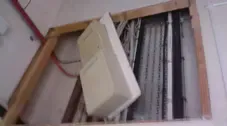
Supplier ManagementElectrical Installation
During an audit undertaken by ZES in a large life science facility, an insecure electrical installation was discovered. The substandard installation was at height and out of the field of vision. The installation was completed by a 'reputable' contractor who claimed to have extensive experience in the field.
An installation such as this, should never be found in the life science industry!
ZES advised on, planned and helped to implemented the required installation improvements.
Are your contractors just telling you what they want you to hear?
ZES act regularly on behalf of GxP manufacturers and healthcare clients, to ensure contractors supply to the right specifications, standards and user requirements.
Does your company have the technical expertise in-house to challenge the contractor?
Contact ZES for peace of mind, to ensure technical specifications are
actually being satisfied
and complied with.

Supplier Management
Electrical Installation
During an audit undertaken by ZES in a large life science facility, an insecure electrical installation was discovered. The substandard installation was at height and out of the field of vision. The installation was completed by a 'reputable' contractor who claimed to have extensive experience in the field.
An installation such as this, should never be found in the life science industry!
ZES advised on, planned and helped to implemented the required installation improvements.
Are your contractors just telling you what they want you to hear?
ZES act regularly on behalf of GxP manufacturers and healthcare clients, to ensure contractors supply to the right specifications, standards and user requirements.
Does your company have the technical expertise in-house to challenge the contractor?
Contact ZES for peace of mind,
to ensure technical specifications
are actually being satisfied
and complied with.
MHRA New Regulations And Update
As part of the ZES Director's role as Chair of the IHEEM Medical Device Technical Platform, he oversaw and advised the MHRA on DB2006 requirement updates and eventual replacement.
The IHEEM team provided significant improvements which led to a step change in medical device maintenance requirements for the NHS.
Version 1.0 was issued in 2014 and is available to be downloaded below:
Update Version 1.1 was issued in 2015 and is available to be downloaded below:
Update Version 1.3 was issued in 2021 and is available to be downloaded below:
ZES have a wealth of experience to benefit clients and patients.
MHRA New Regulations And Update
As part of the ZES Director's role as Chair of the IHEEM Medical Device Technical Platform, he oversaw and advised the MHRA on DB2006 requirement updates and eventual replacement.
The IHEEM team provided significant improvements which led to a step change in medical device maintenance requirements for the NHS.
Version 1.0 was issued in 2014 and is available to be downloaded below:
Update Version 1.1 was issued in 2015 and is available to be downloaded below:
Update Version 1.3 was issued in 2021 and is available to be downloaded below:
ZES have a wealth of experience to benefit clients and patients.
NHS EBME Department
Review And Improvement Implementation
ZES have audited a number of NHS EBME departments. Sizable reports were produced highlighting significant opportunities for improvement including efficiency and compliance aspects. ZES were further engaged to help implement the proposals, which were fully embraced.
Significant savings of up to £250,000 have been proposed in one particular NHS trust. Following review completion in another NHS trust, a member of our team was provided with excellent references.
Significant changes included:
- Quality systems
- Ways of working
- Risk-based approaches
- Department reporting structure
- Computer system data security
Contact ZES for EBME Department Review and Improvement.
NHS EBME Department
Review And Improvement Implementation
ZES have audited a number of NHS EBME departments. Sizable reports were produced highlighting significant opportunities for improvement including efficiency and compliance aspects. ZES were further engaged to help implement the proposals, which were fully embraced.
Significant savings of up to £250,000 have been proposed in one particular NHS trust. Following review completion in another NHS trust, a member of our team was provided with excellent references.
Significant changes included:
- Quality systems
- Ways of working
- Risk-based approaches
- Department reporting structure
- Computer system data security
Contact ZES for EBME Department Review and Improvement.
NHS EBME Department
Review And Improvement Implementation
ZES have audited a number of NHS EBME departments. Sizable reports were produced highlighting significant opportunities for improvement including efficiency and compliance aspects. ZES were further engaged to help implement the proposals, which were fully embraced.
Significant savings of up to £250,000 have been proposed in one particular NHS trust. Following review completion in another NHS trust, a member of our team was provided with excellent references.
Significant changes included:
- Quality systems
- Ways of working
- Risk-based approaches
- Department reporting structure
- Computer system data security
Contact ZES for EBME Department Review and Improvement.
Supplier Personnel Qualifications And GMP Experience
A Life Science IT Supplier appointed a technician who had very little or no life science experience, or formal IT academic qualifications. Whilst working with the IT Supplier, ZES questioned the appointment.
ZES were informed that the IT supplier was investing in new talent and investing heavily in education and training! When asked which courses the new technician would be undertaking, only the course shown was stated.
Upon investigation, the individual concerned was a car mechanic on Friday and then, on Monday, installing IT Systems and software applications, on a pharmaceutical site!
According to the IT supplier, the £19.99 online course was all that was required!
ZES have a wealth of experience supported by credible qualifications to benefit clients and patients.
Supplier Personnel Qualifications And GMP Experience
A Life Science IT Supplier appointed a technician who had very little or no life science experience, or formal IT academic qualifications. Whilst working with the IT Supplier, ZES questioned the appointment.
ZES were informed that the IT supplier was investing in new talent and investing heavily in education and training! When asked which courses the new technician would be undertaking, only the course shown was stated.
Upon investigation, the individual concerned was a car mechanic on Friday and then, on Monday, installing IT Systems and software applications, on a pharmaceutical site!
According to the IT supplier, the £19.99 online course was all that was required!
ZES have a wealth of experience supported by credible qualifications to benefit clients and patients.
Your Dedicated
ZES
Validation Consultant
ZES give the customer
the assurance and peace of mind
of a single point of contact,
with full accountability.
A dedicated ZES Validation Consultant is ready to help you with your requirements.
Your Dedicated
ZES
Validation Consultant
ZES give the customer the assurance
and peace of mind of a single point of contact,
with full accountability.
A dedicated ZES Validation Consultant is ready to help you with your requirements.
Your Dedicated
ZES Validation Consultant
ZES give the customer the assurance
and peace of mind of a single point of contact,
with full accountability.
A dedicated ZES Validation Consultant
is ready to help you with your requirements.
